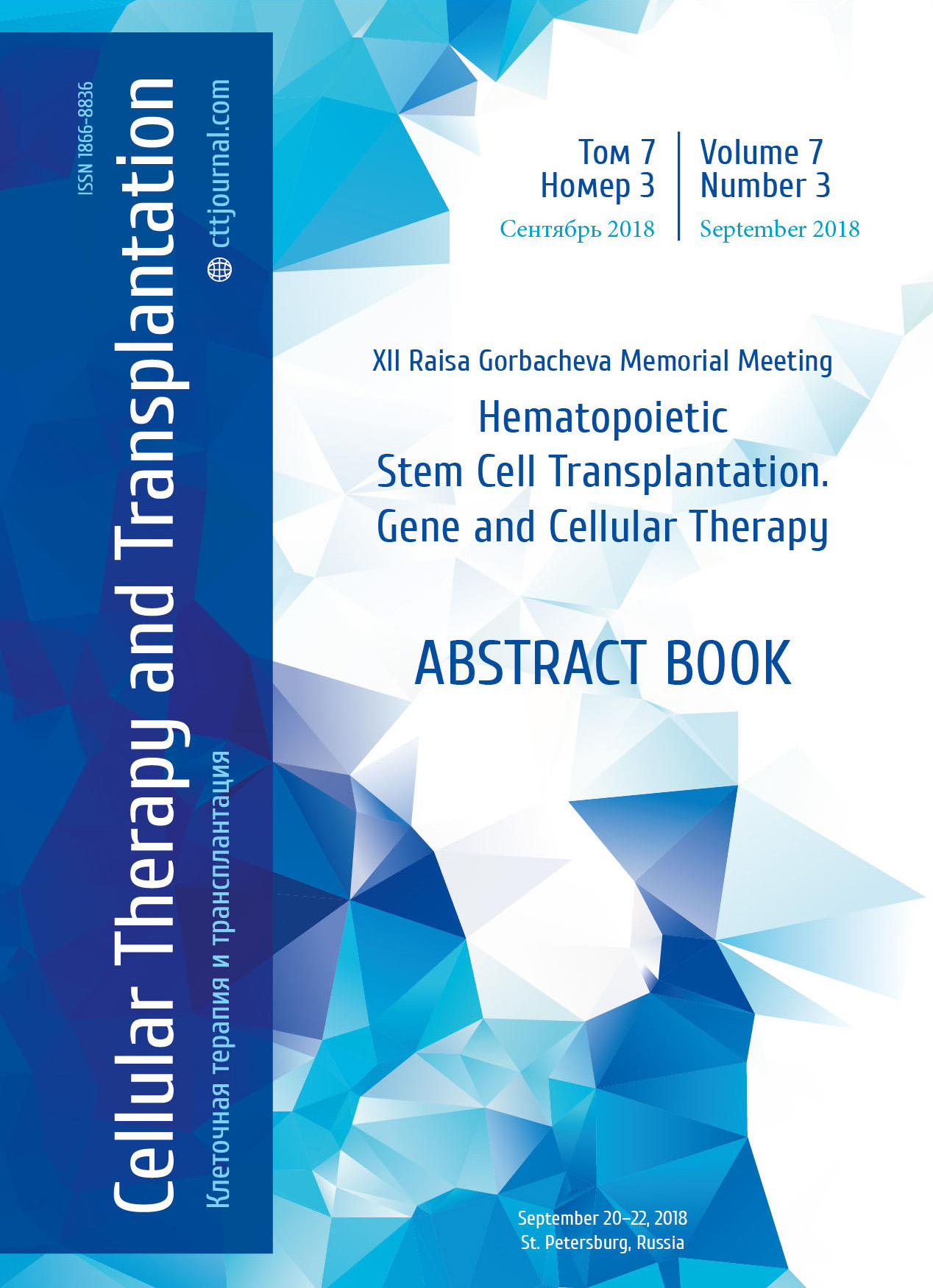The role of histopathological, virological and bacteriological findings in the diagnostics of acute graft-versus-host disease of the gastrointestinal tract
2 Research Institute of Pediatric Infections, Federal Medico-Biological Agency of Russia, St. Petersburg, Russian Federation
Summary
Introduction
Acute graft-versus-host disease (aGVHD) of the gastrointestinal tract (GI tract) is one of the most dangerous complications after allogeneic hematopoietic stem cell transplantation (allo-HSCT). However, there is consensus now on the diagnostic workup in this complication. Clinical manifestations of aGVHD are nonspecific and can resemble other conditions. The goal of our research was to analyze the results of histological examination of mucous colon and upper digestive ways (esophagus, stomach, duodenum) of the patients after HSCT with suspected GVHD, and to determine the incidence of different findings.
Patients and methods
Our retrospective research included 112 patients after allo-HSCT. Most of the patients received allo-HSCT as treatment for acute leukemia. Median age was 30 years (2-67). All these patients were studied by gastroduodenoscopy and/or colonoscopy, with biopsy and histopathology investigation of the GI sites. Herpes simplex virus, herpes virus type 6, cytomegalovirus were identified by PCR in the biopsies. Fecal samples were studied by ELISA for C. difficile, and seeded in cultures for antibiotic-resistant bacteria. Median timing for the biopsies was 85 days (15-413) post-HSCT. In 56% of cases, biopsy of upper GI compartments was performed, in 35% of cases, lower parts of GI-tract were sampled, and both compartments were subject to biopsies in 9% of cases.
Results
Conventional histology revealed signs of aGVHD in 73.5% of colon biopsies, and only in 36.5% of upper GI biopsies, p=0.02. Mild histological signs of GVHD were present in 56% of biopsies from the lower GI mucosa, moderate pathology, in 28%, and severe changes, in 16%. In upper GI tract, mild histological signs were observed in 60% cases, moderate changes, in 33%. Viral infection revealed by PCR was more frequent in colon biopsies (53% and 36%, p=0.046). Bacterial infection was detected in 38% patients with lower GI biopsy sampling, and in 19%, from the upper GI biopsies, respectively, with no significant difference between these groups (p=0.56). Lower GI tract viral infection had no influence on the 1-year overall survival (OS) (65.2% and 64.7%, p=0.67). Similar effect was observed for the upper GI tract viral infections (85.7% and 84.4%, p=0.8). Overall survival (OS) was not influenced by bacterial infections in the biopsies of lower GI tract (61.4% and 72.6%, p=0.4), or upper GI tract samples (85.7% and 86.4%, p=0.8). Histological grade in lower GI biopsies was the main feature that affected OS (88.2%, 47.6, and 60.2%, for mild, moderate and severe histological grades, respectively, p=0.01). Presence of upper GI GVHD also adversely affected OS (72.0% and 95.2%, p=0.04). However, severity of upper GVHD had no influence on OS, possibly, as result of small sample size.
Conclusion
The study demonstrates different etiologies for upper and lower GI lesions after HSCT and confirms the necessity of biopsy and PCR assays of the samples. Although the study size was small, it did not identify the impact of viral and bacterial GI infections on survival.
Keywords
Acute graft-versus-host disease, hematopoietic stem cell transplantation, gastrointestinal tract, histopathology.


